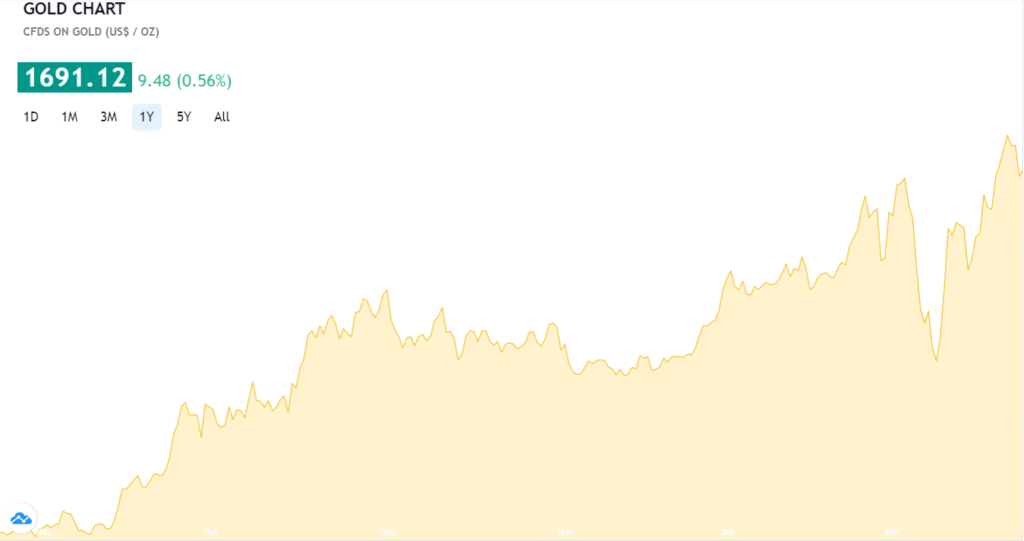
This year, the cost of gold has soar as much as 20%, hitting a pinnacle of $1,549 per ounce in September. As downturn fears mount in the midst of worldwide vulnerability, financial specialists have packed into gold, since quite a while ago known as a place of refuge resource. This has pushed up the cost and changed the game for the gems business, which utilizes gold as a product material rather than a ware resource.
Automic Gold concluded that to balance the expanded expense of the material, it would raise costs on its gems by generally 30% no matter how you look at it.

“As an entrepreneur, I’m constantly anxious to raise costs,” Sandimirova disclosed to Markets Insider in a meeting. Be that as it may, Sandimirova expected to purchase progressively gold sooner or later, and they stressed they wouldn’t have the option to buy enough material to fulfill need without a cost increment.
From the outset, deals took a crash after Automic Gold made its expansive cost increment. Fortunately, when Sandimirova took to web based life to clarify the knock in gems costs, deals came back to their ordinary normal, they stated, demonstrating that shoppers are eager to follow through on greater expenses for fine merchandise and organizations with economical qualities at the present time.
Customary organizations endure the shot in net edges
While littler organizations like Automic Gold may pass expanded ware costs along to buyers, bigger organizations may select to keep costs stable. Conventional diamond setters, for example, Tiffany and Co. what’s more, Signet Jewelers have a more prominent capacity to endure the shot in net edges and save costs stable for shoppers.

In any case, the impact on net edges can be huge, as per expert counts. For instance, Tiffany and Co’s. ware cost is half precious stones and gemstones, 25% silver, 15% gold, and 10% platinum, as indicated by a September 2018 note from Oliver Chen, a retail examiner at Cowen.
On the off chance that the cost of any of those materials expanded, it could hit cost of merchandise sold, or COGS, as indicated by Chen, however he’d normally anticipate that a three-should five-quarter slack for changes in expenses to affect edges.
Chen determined that for Tiffany’s, for each 1% expansion in material cost, net edges could decay by 20 premise focuses. By that math, a 20% expansion in the cost of gold could have a 400-premise direct hit toward net edges.
The reusing and exchanging market is blasting
On the other side, a few organizations have seen a profit by the blasting cost of gold. There’s been a flood in the reuse and resale advertise for fine adornments this year, as indicated by Benny De Kalo, the originator and CEO of Worthy, an extravagance products commercial center.

“As the gold cost goes up individuals believe it’s an ideal opportunity to sell,” De Kalo disclosed to Markets Insider in a meeting. As downturn dangers have expanded, shoppers are hoping to sell a portion of their fine gold adornments, De Kalo said. While Worthy has seen 100% yearly development in the course of the most recent five years, that is expanded in 2019, De Kalo disclosed to Markets Insider.
De Kalo likewise said that Worthy has seen an uptick sought after for reused precious stones as the cost of harsh jewels has bottomed out because of an excess in supply that is made it hard to bring in cash from new jewels and put a premium on reused ones. DeBeers’ new precious stone deals dropped 39% on the year for a similar explanation.
The connection among gold and precious stones
While the oversupply in harsh precious stones is because of various reasons, there’s a fluffy connection between climbing gold costs and falling jewel costs, as per a September note from Citigroup expert Barry Ehrlich.
The note clarifies that precious stones don’t hold an incentive just as gold, which is a place of refuge resource, so during times of downturn hazard or buyer dread, gold will in general pattern up and jewels down.

Collection of many different natural gemstones.
The last time gold costs were raised for a delayed period, in 2011 to 2012, gold reusing expanded and came to about 36% of the complete world stockpile, as indicated by Ehrlich. This included expanded degrees of precious stone reusing, he said.
There could be business as usual ahead. “In the event that financial conditions crumble, we ought to expect stifled interest as well as extra jewel supply from reusing,” Ehrlich composed.
